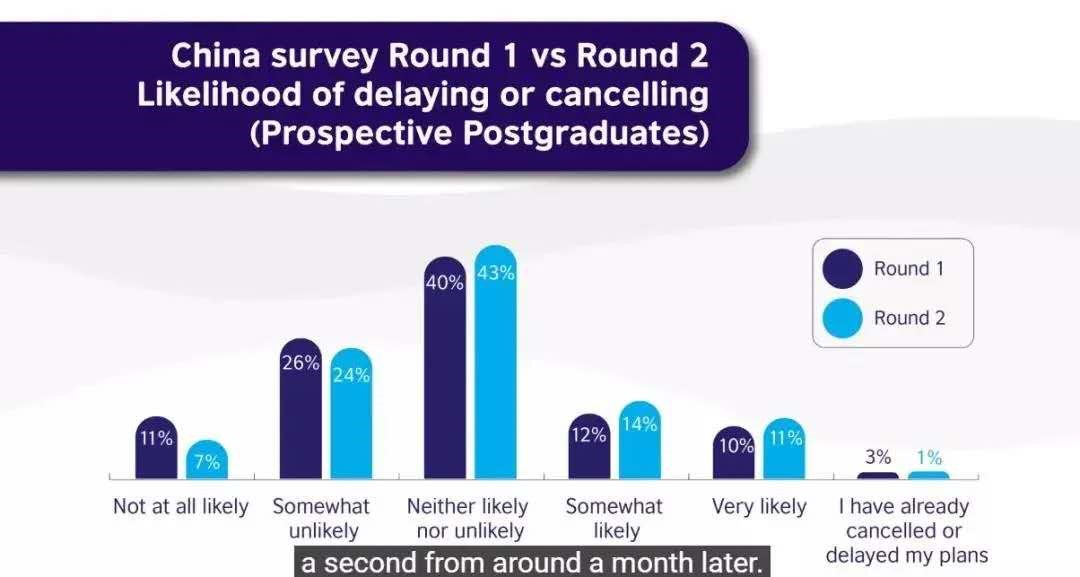托福听力2个扣分主因分析 ,听不清还是听不懂要搞明白。今天小编给大家带来了托福听力2个扣分主因分析,希望能够帮助到大家,下面小编就和大家分享,来欣赏一下吧。
托福听力2个扣分主因分析 听不清还是听不懂要搞明白
托福听力扣分听不清原因分析
托福听力中考生对听力素材内容表示听不清,其实也就是无法正确识别听到的语音信号。简单来说,就是没能接收到听力素材中包含的信息,对你来说某些录音内容就像是噪音一样,除了带来困扰完全没有给你半点帮助。所以对于听不清的问题,正确的应对方法就需要先搞清楚听不清的真正原因。
大家不妨简单思考一下,为什么我们会“听不清”呢?不,换个角度,我们为什么能“听清”呢?因为我们脑子里存了某个“音”和“意思”的对应关系,当我们听到语音信号的时候,会把听到的信号与脑子里存的信号进行匹配,成功以后,输出对应的“意思”,这就“听清”了。
所以,“听不清”的原因,要么是脑子里存的音错了,要么是听到的信号错了。那么解决方法就可以分成两个部分,第一部分是确保自己存进脑子里的读音绝对是正确的,这一部分的要点就在于背单词的时候,不仅要记住单词的拼写和意思,词汇的发音也要记牢记准,特别是那些容易出现发音含混,或者有一些发音相近容易混淆词汇的单词,大家要做到准确记忆正确发音。
第二部分就是校准听到信号的辨音能力了,辨音能力其实主要是反应速度,因为考生本身准确记住了词汇的发音,但有时候从录音中别人嘴里说出来,大家可能一下子反应不过来,等到对上号是哪个词的时候早就过去了好几句话,这样同样会有听不清的问题发生。大家可以在做听力训练的时候多进行听写训练,从单个句子开始逐渐拓展到多个句子构成的段落,按照边听边记的方式练习,每段内容听完记完立即核对,找到自己反应比较慢的那些词汇或是读音并重点记忆,通过这种方式加强反应速度。这样一来就能较好地解决托福听力听不清的问题了。
托福听力扣分听不懂原因讲解
除了听不清外,另一种错误主因是.听不懂,也就是无法正确理解听到的语音信号。大家可能都遇到过这种情况,明明一段内容每个句子都能听清说了什么,但其中包含的意思却无法正确理解,就好比别人在你耳边用你不知道的语言说了一句话,你明明能够按照发音模仿出这句话,但却不知道这句话本身是什么意思,这就是所谓的听不懂。
至于听不懂的问题,可能会是单词认知的障碍,也可能是句子结构的障碍,还可能是文章整体逻辑认知的障碍,就需要具体情况具体分析。
如果是单词认知障碍,或者说单纯的是某个词汇没有背过所以听不懂,一般来说大多是一些比较专业的学术学科类词汇,对这类词汇小编建议大家一方面做一些托福考试听力常考学科话题的背景知识补充,把一些常用的学术词汇适当记忆一下其发音和意思,另一方面可以学习一些绕开特定词汇也能整体理解的技巧,比如听不懂的这个词汇统一用个代号记成A,哪怕听不懂这个生词,只要知道这个生词大概是干什么的同样不会影响做题。
如果是句子结构障碍,其实这属于语法的范畴。托福考试中长难句是个比较头疼的问题,虽然长难句大多出没于阅读当中,但在听力里偶尔也会经由说话者的嘴里说出来,当然听力中长难句一般不会太复杂,最多只是叠加一个从句之类的结构,大家如果能够听懂一些长难句中常用的关系词逻辑词,其实理解压力并不会很大,小编建议大家先从阅读部分的长难句开始攻克,如果阅读里的复杂句子都能看懂,那么相信听力中少量出现的长难句应该也不会成为大家的负担。
最后一种听不懂的可能原因是文章整体逻辑认知的障碍,也就是考生过于重视文章的细节,某个部分听的很懂,但题目要是问整体讲了什么,文章主旨大意是啥,可能就瞬间哑火了。这个问题也不难解决,托福听力的特点之一就是比较明显的套路化素材结构,无论是对话还是讲座,其发生的场景,涉及到的主题,还有整段听力内容的展开形式和叙述结构都是相对固定的,根据小编经验多年来一直都没有发生太大变化,因此大家只要进行充分练习,并在练习过程中主动归纳和整理一下各个听力素材的相关信息,很快就能积累出相应的经验。简单来说,对文章整体逻辑认知的障碍,题海即可破之。
2020托福听力练习:珊瑚漂白现象阻碍鱼类学习躲避捕食者
In April the world learned that more than 90 percent of Australia's Great Barrier Reef had become bleached. That is, warming waters or other conditions cause the algae living in the coral to exit, leaving the coral weak. It's a bleak statistic, because it's reasonable to assume that as the corals themselves suffer, the entire ecosystem they support suffers as well.
For example, a study finds that bleaching hinders fish from learning to avoid predators.
Imagine you're a fish, and suddenly one of your friends meets its unfortunate end in the jaws of a predator.
"We found that these animals actually have this really sophisticated way of learning, which involves the linking of chemical alarm cues, which are damage-released cues from conspecifics, and any other smell or even the sight of anything novel... sort of a Pavlov's dog-type scenario."
James Cook University marine scientist Mark McCormick. He and his team found that this learning process breaks down when the coral becomes bleached. Instead of hosting algae within, the bleached coral becomes blanketed by algae.
"We've used little patches of live coral and little patches of dead and degrading coral, which have similar topographic complexity, and what we've done is we put those little patches within a bed of either live coral or dead and degraded coral."
Onto each patch, the researchers deposited a small, naive reef dweller called a damselfish. They wanted to see how the health of the reef influenced the fish’s ability to learn to avoid the odor of a predator called the dusky dottyback. And they found that the presence of degraded coral—even if surrounded by a healthy reef—entirely disrupted that learning mechanism.
"It touches on a really big issue, to some extent a really global issue. So, even though this is actually dealing with a relatively small aquarium fish, it's got life history traits that are very similar to virtually all of the other marine organisms."
So, is there anything that can be done to help the world's reefs and their inhabitants?
"These communities are going to have to try and rebuild, and they have really effective mechanisms whereby they can re-seed themselves. But we're talking about timescales of really probably 10-15 years to actually get a healthy reef back after really a cataclysmic change."
And for that to happen, McCormick says, we need to reduce our CO2 emissions and to stop polluting our waterways. In order for things to improve underwater down under.
Thanks for a minute for Scientific American — 60-Second Science. I’m Jason Goldman.
今年4月,全世界知道了澳大利亚大堡礁有超过90%的珊瑚出现漂白现象的消息。这是由于温暖的海水和其他条件导致珊瑚排出了共生的藻类,这使珊瑚变得虚弱。这一数字并不乐观,因为我们有理由认为在珊瑚本身遭受破坏的同时,支持珊瑚的整个生态系统同样遭到了破坏。
举例来说,一项研究发现,漂白现象对鱼类学习躲避捕食者造成了阻碍。
想象一下,假如你是一只鱼,突然你的一个同伴遭遇不幸,命丧捕食者口中。
“我们发现,这些动物的学习方式非常复杂,学习过程包括与化学物质相关的警报提示,即同种生物传递出的危险信号和味道,甚至是不同寻常的景象,就像巴甫洛夫的狗这种理论。”
这是詹姆斯·库克大学的海洋科学家马克·麦考密克所说。他和他的团队发现,在珊瑚漂白化以后,这种学习过程就被破坏了。藻类不再生活在珊瑚体内,而是会覆盖住珊瑚。
“我们用小块活珊瑚和死后降解的珊瑚进行了实验,它们拥有类似的地形复杂性,我们把这些小块珊瑚放在有活珊瑚或死后降解珊瑚的海底。”
研究人员在每块珊瑚上放了一个小“礁民”——雀鲷。他们想知道珊瑚礁的健康如何影响鱼类学习躲避捕食者气味的能力。他们发现,降解珊瑚即使处在健康的珊瑚礁中,也会彻底破坏鱼类的学习机制。
“这涉及一个非常重要的问题,从某种程度上可以说是全球问题。虽然这只是用相对较小的水族观赏鱼进行的实验,但是实验得出的生活史特征和所有其他海洋生物类似。”
有没有什么方法能帮助世界上的珊瑚礁和栖息于珊瑚礁的生物?
“这一群体需要重建,它们拥有可以自我修复的高效机制。但是在灾难性变化之后,这些珊瑚恐怕需要10年至15年的时间才能恢复正常。”
麦考密克表示,为了让珊瑚恢复健康,我们要减少二氧化碳排放量,停止污染水域的行为。这样才能保证海底的情况得到改善。
谢谢大家收听科学美国人——60秒科学。我是杰森·高曼。
重点讲解:
1. break down 出毛病,损坏;
例句:Her health broke down under the pressure of work.
工作的压力把她的身体弄垮了。
2. touch on 谈及;涉及;
例句:The book does not touch on this question.
这个问题书里面没涉及到。
3. to some extent 在某种程度上;
例句:To some extent I hold that opinion of them still.
在某种程度上,我仍对他们持同样的看法。
4. be similar to 相像的;相仿的;类似的;
例句:His stance towards the story is quite similar to ours.
他对该报道的态度和我们很相像。
2020托福听力练习:鸟类叫声的特殊顺序
Humans have always considered themselves special compared with other animals.
One reason is the complexity of our language—bounded by unique rules, such as syntax, where we string words together in a specific order to create meaningful sentences.
But it turns out a bird may also vocalize with syntax rules—the Japanese great tit, a bird that's a close relative of North America's very own chickadee.
Toshitaka Suzuki, of Japan's Graduate University for Advanced Studies, has been listening to the calls of the Japanese great tit for the past decade.
Suzuki has recorded at least ten alarm calls used by the bird.
These include, known as the ABC call, which alerts other great tits to the presence of a predator, and the D call, which signals the birds to approach the caller.
Now Suzuki and his colleagues have found that the great tit uses those calls together to deliver both messages to other birds.
And they found that the order of that call was essential—only ABC-D made sense to the birds.
When the scientists intentionally reversed the order to create a D-ABC call, the birds did not respond.
The study is in the journal Nature Communications.
“I think the really interesting thing is why the order matters, and figuring that out I think will be difficult but also potentially really, really interesting, because it'll give a lot of insight...”
David Wheatcroft of Sweden's Uppsala University, one of the study scientists.
“You wouldn't expect sort of naively that it would matter.
Obviously it matters in human language, the order in which we say things, but it's still somehow shocking when you find it in tits.
So I think understanding why it's the case will be really interesting in the future.”
The work could help explain the evolution of the building blocks and structure of our own
languages.
同其他动物相比时,人类总是认为自己与众不同。
其中一个原因就是因为我们语言的复杂性—比如语法的独特规则,我们会将单词按照特定的语序串在一起组成有意义的语句。
但研究结果表明鸟类的叫声也有自己的句法规则—比如北美山雀的近亲,日本大山雀就是这样。
在过去10年中,日本高级研究所的铃木俊孝一直从事本国大山雀叫声的研究。
铃木已经记录下这种鸟知识10种的警示性叫声。
其中包括用以警示其他大山雀这里有捕食者的ABC叫声,还有示意其他鸟可以接近的D叫声。
现在铃木和他的同事们发现大山雀也使用这样的叫声向其他同类传递信息。
而且他们还发现,叫声的顺序至关重要—其他鸟类只能理解ABC-D的叫声。
当科学家们将叫声顺序有意改成D-ABC时,这些鸟没有任何回应。
这项研究已在《自然交流》杂志上发表。
“我认为真正有趣的地方在于为什么叫声顺序如此重要,而想要揭开这个谜团可能会非常困难,但这将会很有趣,因为这将为我们提供很多帮助…”,
瑞典乌普萨拉大学的科学家大卫·威特克罗夫特说道:
“你千万不要天真的以为这不重要。
语序在我们人类的语言中具有非凡意义,但是令人吃惊的是大山雀的叫声中也是如此。
因此我觉得寻找其中的原因在未来会很有趣。”
这项工作可能会帮助我们解释人类语言模块及结构的进化历程。
1.compare with 比较
例句:Compare with the others.
和其他人相比。
2.turn out 关掉;结果是
例句:If I had known my life was going to turn out like this, I would have let them kill me.
如果我早知道自己的人生结局会是如此,我当时宁愿让他们杀了我。
3.figure out 想出; 解决
例句:It took them about one month to figure out how to start the equipment.
他们花了大约1个月的时间才搞清楚如何启动设备。
4.human language 人类的语言
例句:Linguistics is a branch of study on human language.
语言学是人类语言中的一个分枝。
托福听力2个扣分主因分析相关文章:






